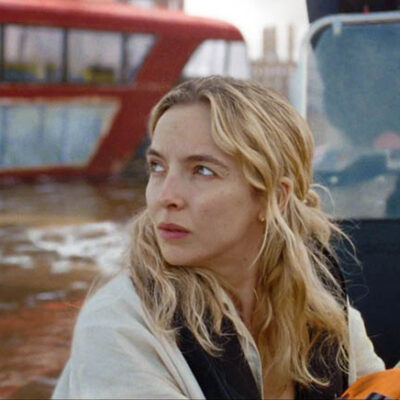However, Angel’s most remembered work remains the cybersex sequence and the VR animation showcasing a CG version of the character Jobe Smith (Jeff Fahey). “For the sex scene, the idea was to make the backgrounds as psychedelic and as full of crazy fractals as we could,” explains Limber. “We had all these effects where they kiss and their faces melt together to become this dragonfly. Brad Hunt did that with a lot of morphing.
 “The animation’s just key frame – done in Wavefront – but a lot of the undulating terrain is all sine wave animation,” adds Limber. “So it’s really simple by today’s standards, but I think people hadn’t seen it so candy-colored and so dynamic in a movie before.”
“The animation’s just key frame – done in Wavefront – but a lot of the undulating terrain is all sine wave animation,” adds Limber. “So it’s really simple by today’s standards, but I think people hadn’t seen it so candy-colored and so dynamic in a movie before.”
For Jobe’s CG avatar, Angel built the model from Jeff Fahey reference, beginning with drawing an eyeliner grid over the actor’s face and then photographing from front and side angles. “We had about 30 or 40 expressions we had gleaned would be needed from the script,” says Limber.
“We digitized that and then made a bunch of morph targets. Brad Hunt had created this whole scripting system so we could actually put the voice text in there and then the animator could set some easy key frames. When he gets sucked into the vortex, that was done with a distortion field. A lot of that tech was handmade for those days because there was nothing, no commercial products available.”
“We’d written all of our own software for image formats and object formats, and that enabled us to do very organic work, like particle systems, the likes of which nobody else was able to do at the time,”
—Mark Malmberg, former Art Director, Xaos, Inc.


 “The animation’s just key frame – done in Wavefront – but a lot of the undulating terrain is all sine wave animation,” adds Limber. “So it’s really simple by today’s standards, but I think people hadn’t seen it so candy-colored and so dynamic in a movie before.”
“The animation’s just key frame – done in Wavefront – but a lot of the undulating terrain is all sine wave animation,” adds Limber. “So it’s really simple by today’s standards, but I think people hadn’t seen it so candy-colored and so dynamic in a movie before.”





